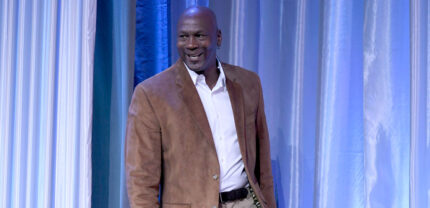By Charlie Wells and Claire Ballentine
To say the past year has been a disappointment for retail investors would be an understatement.
Many were drawn into the markets by the pandemic-era exuberance that fueled by low interest rates: Stocks surged, crypto boomed and markets popped. And then 2022 landed with a thud.

Russia’s war in Ukraine, persistent inflation, rising interest rates and fears of a recession shifted the landscape, with the S&P down nearly 20% and the Nasdaq slumping more than 30% as the year comes to a close. Bitcoin has been even worse, plunging more than 60%.
Will conditions improve next year? The outlook isn’t bright. Bank executives have been talking about job cuts and a recession in 2023. And economists are still divided on how high the Federal Reserve will go with its interest rate hikes, which are intended to tackle inflation but have also dampened the economic mood everywhere from Wall Street to Main Street.
With this in mind, Bloomberg News put four questions to financial advisers from across the country. Two questions focus on lessons learned from the past year, and two on what’s ahead. The takeaways are below, edited for length and clarity.
Think Long-Term
Ross Mayfield, investment strategy analyst at Baird in Louisville, Kentucky
What did you get wrong ? I was not quite on “team transitory,” but the breadth and depth of this year’s inflation problem surprised me. While we are seeing pandemic-related goods inflation return to normal, I underestimated the extent to which our labor shortage would lead to stickier wage growth and services inflation. The labor market is still very disoriented. Russia’s invasion of Ukraine obviously pressured commodity prices as well, but domestic inflation is a much broader issue.
What did you get right? That the Fed would have a single-track focus on inflation. With their employment mandate basically fulfilled by the end of 2021 and the decision to drop the “transitory” language from their communications, we expected the Fed would functionally have a single mandate in 2022: price stability. Though the pace has been more aggressive than anticipated, we weren’t overly surprised by the commitment to beating inflation. We also expected that the consumer would remain a bright spot in the economy, and that has proven true. Despite historic inflation and rising interest rates, retail sales and personal spending have been robust.
How are you telling clients to position themselves for 2023? We’re telling clients to think long-term and stick to their plan. We expect more volatility in the near-term, including the possibility of retesting the October lows early in the year, but we think the setup for long-term investors is starting to look attractive. Valuations have mostly reset, and fixed-income yields are still hovering around decade highs. More tactically, we think near-term caution and defensive positioning makes sense. We’d favor adding to quality in both fixed income and equities and using rallies to reduce exposure to more speculative assets as we head into an economic slowdown or recession.
What is the single best opportunity you see in the year ahead? High-quality equities, with a focus on strong free cash flow and margin resilience. Margin defense should be a theme that is rewarded in the coming year given the downward pressure on profit margins that we are already seeing and the likelihood it continues into 2023. Most high-quality indexes are tech and growth heavy, but we’d skew away from those sectors in favor of shorter-duration equities and cash-flow generators.
Tech Rebound
Colin Moynahan, financial adviser for Twenty Fifty Capital in Charleston, South Carolina
What did you get wrong this year? The resiliency of the US consumer to continue to aggressively spend amid increasing rates and inflation was much stronger than I anticipated. My hypothesis was we were in for a faster, most evident reaction leading to a noticeable slowdown in economic activity. So far, it seems the cash savings built up during the pandemic will keep spending steady through to 2023.
What did you get right? Fortunately, the growth-value reversion we witnessed in the equity markets was something we started to make moves on at the end of 2020. By shifting clients heavier into value-oriented investments at the end of 2020 and onwards, we were able to increase those positions at attractive prices. These positions held up comparatively very well in 2022 as we watched the selloff in growth stocks.
How are you telling clients to position themselves for 2023? To focus on the foundational pieces. Prioritize maintaining an adequate emergency fund with enough cash to cover short-term needs and stay attentive to liabilities. Adequate emergency funds help to calm emotional reactions to investment declines, thus help avoid the temptation to sell during a downturn. As rates stay high or continue to increase, personal debts will become more expensive. Clients need to stay attentive to these rising costs throughout 2023 and adjust both their emergency funds and monthly spending accordingly.
What is the single best opportunity you see in the year ahead? Opportunities are about to surface in the markets in a big way. Those willing to stay patient, stick to their plan, and continue to invest will see great opportunities for long-term investments. There are going to be a number of companies across sectors trading at fundamentally very attractive values next year. I think many will be found in the tech space if we continue to see rate hikes. Some solid companies have seen and may continue to see price-to-earning ratios rebound in the months ahead.
Short the Dollar
Fiona Cincotta, senior financial market analyst at City Index in London
What did you get wrong this year? When we took our crystal balls out this time last year, a Russian invasion of Ukraine wasn’t even on my radar. This turned out to be the most defining market event of the year. Huge market-moving events happen and often can’t be predicted. This is when being flexible in your approach to trading is key and highlights the importance of trading what you are seeing, rather than what you want to see.
What did you get right? It’s fair to say that my outlook for 2022 was wrong. There was nothing that I forecast in January which came about, owing to the Russian invasion and how it changed the landscape. However, as the year progressed, I was correct in forecasting that US inflation would slowly start to cool in late Q3 and Q4. This year has really highlighted the importance of the role of central banks in directing market movements. If you figure out the Fed’s plan, that’s a great baseline to work from.
How are you telling clients to position themselves for 2023? We expect 2023 to be a year of two halves and of geographical differences. While central banks are still expected to raise interest rates in the first quarter of the year, we expect the attention to quickly turn to when the Fed might start cutting interest rates. Given how sticky inflation is proving to be, this is unlikely to happen until the second half of the year, possibly not even until the final quarter of 2023. As a result, positioning for the first half of the year, which could see the US tip into recession, could remain defensive. However, moving towards the second half, cyclicals and tech could be back in vogue.
What is the single best opportunity you see in the year ahead? Short the US dollar. The focus, particularly in the second half of the year, will be firmly on when the Fed will adopt a dovish pivot. Meanwhile, other central banks are unlikely to be ready to start cutting interest rates again next year. As a result, the US dollar could come under more pressure, giving back more of this year’s gains. Sell USD/JPY, particularly if the Bank of Japan shifts towards a less dovish stance. Buy EUR/USD — the European Central Bank is unlikely to start cutting interest rates in 2023, meaning that central bank divergence could help the pair. Going long gold also gives exposure to the short dollar trade.
Tried and True
Marguerita Cheng, financial adviser and CEO of Blue Ocean Global Wealth in Gaithersburg, Maryland
What did you get wrong this year? On a personal note, I don’t enjoy the car-buying process. I didn’t want to deal with drama and high dealer markups so I missed the opportunity for the tax credit for an electric vehicle.
What did you get right? I helped clients satisfy required minimum distribution requirements prior to Russia invading Ukraine. I told clients that if they didn’t need the funds right away, to deposit them in the savings account. It’s true that I would not be liquidating stocks, stock mutual funds or stock ETFs in the short term. However, this gave clients tremendous peace of mind.
How are you telling clients to position themselves for 2023? I’m encouraging tried-and-true strategies such as diversification and dollar-cost averaging. I’m also encouraging clients to take advantage of tax diversification Roth accounts and taxable accounts.
What is the single best opportunity you see in the year ahead? Some people think they need wealth to invest, but they need to invest to build wealth. My son received his first paycheck from his job as a research fellow in September 2022. He started contributing $500 per month to a Roth IRA. Personally, I’m very excited about plant-based innovation, next-gen healthcare and smart-grid infrastructure.
More stories like this are available on bloomberg.com.




